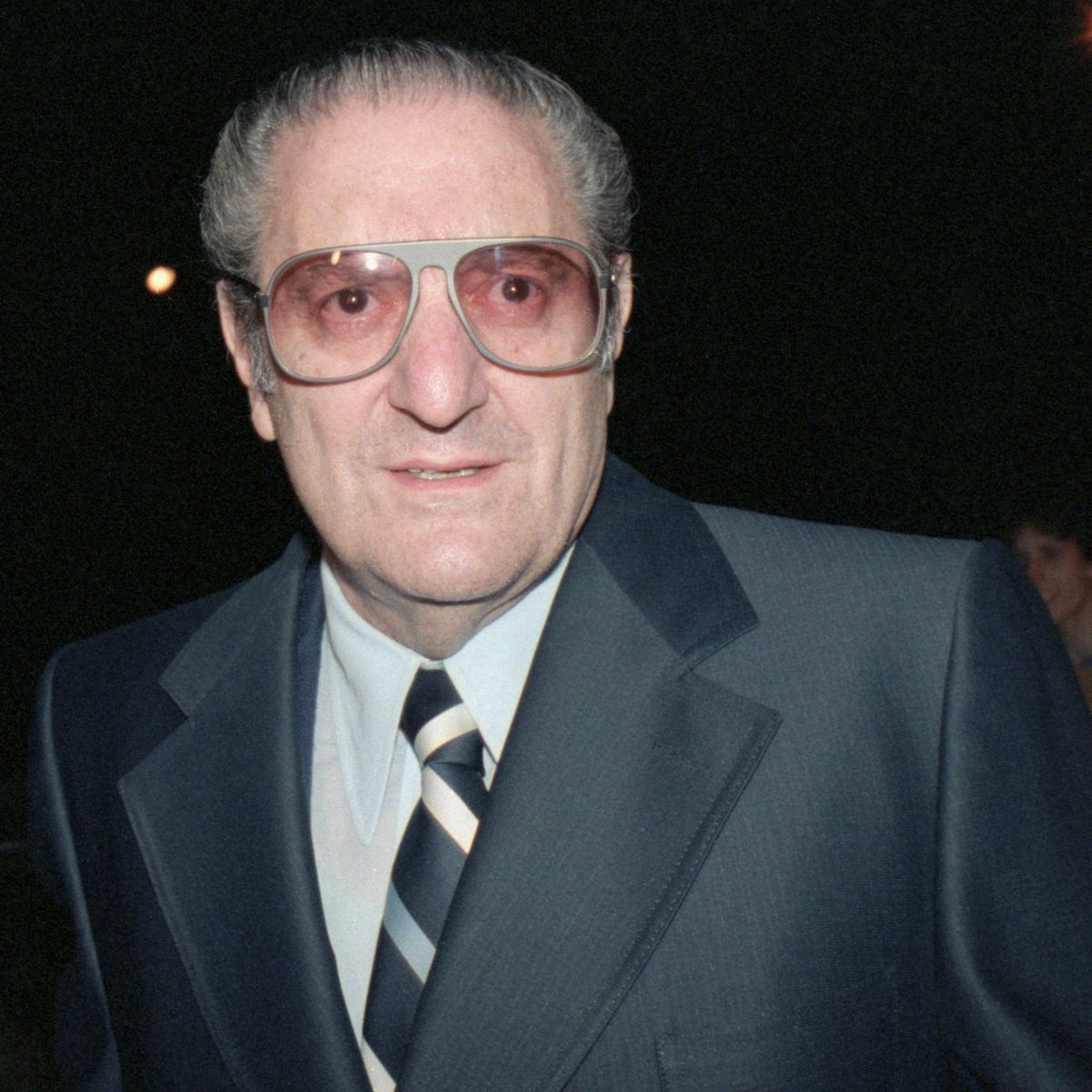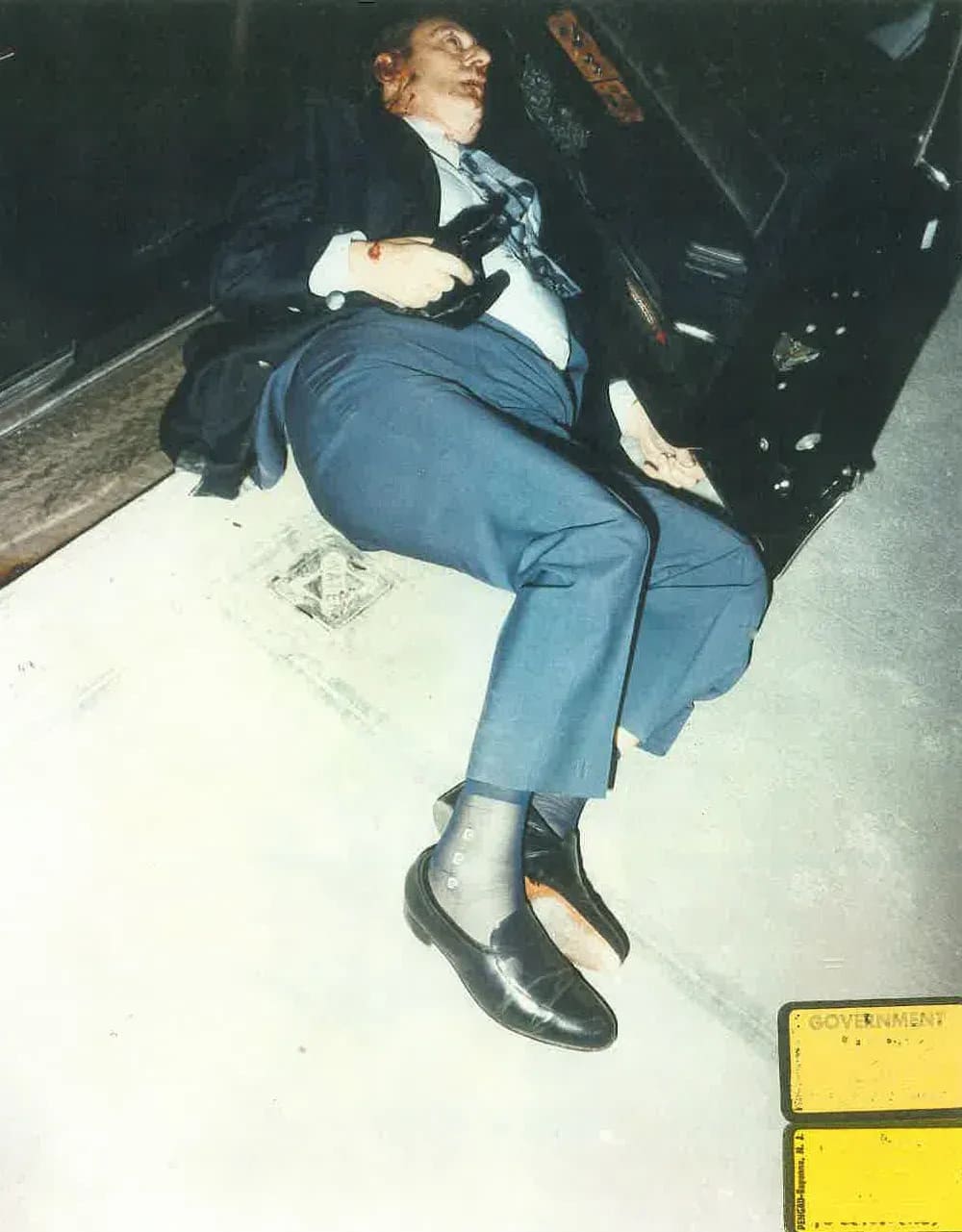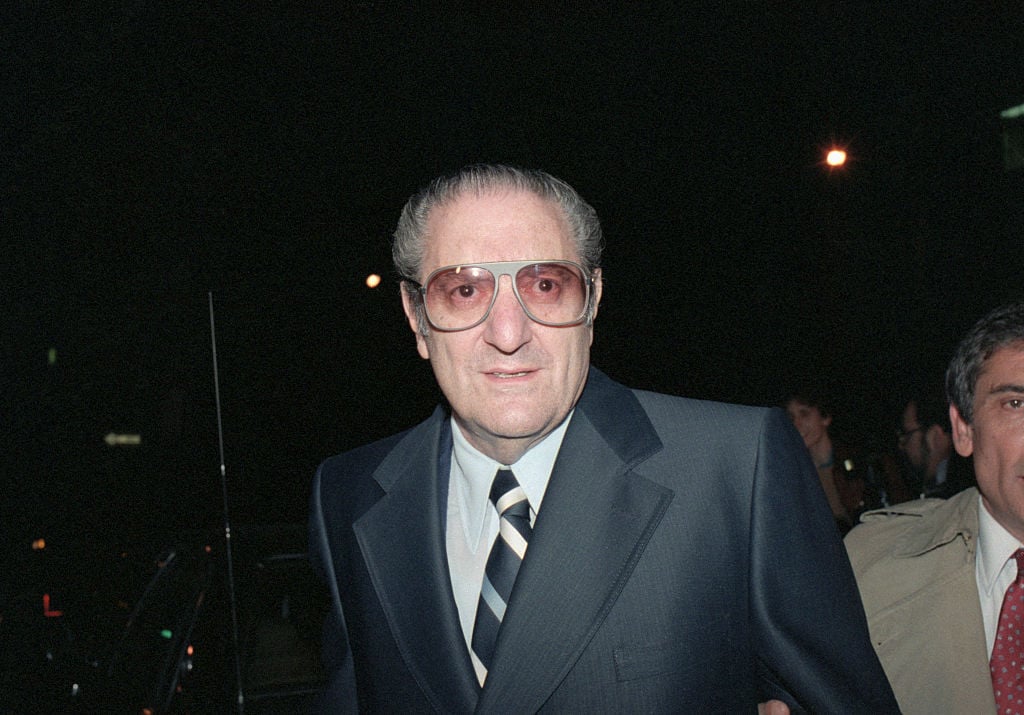Paul Castellano: Unpacking The Story Of A Notorious Mob Figure
When we think about the history of organized crime in America, certain names truly stand out. Paul Castellano is, in a way, one of those figures whose story continues to capture attention, even decades later. His life, and certainly his dramatic end, marked a very significant moment in the unfolding narrative of the mob in New York City. He was, to many, a powerful and somewhat enigmatic presence in the criminal underworld.
This individual, Paul Castellano, held a truly prominent position within the structure of American organized crime. He was, as a matter of fact, widely recognized as the 'boss of bosses' for the Five Families of New York's La Cosa Nostra. His influence, it seems, reached far and wide, touching many aspects of the city's hidden operations. His story offers, perhaps, a glimpse into a time when such figures held immense, albeit illicit, power.
Today, we will take a look back at the life and eventual demise of Paul Castellano. We will explore his rise, his nicknames, and the truly shocking event that brought his reign to an abrupt halt. This article aims to shed light on a pivotal moment in mob history, one that, in some respects, changed the landscape of the underworld for quite some time.
Table of Contents
- Biography
- Personal Details & Bio Data
- The Rise of 'Big Paul'
- ‘The Howard Hughes of the Mob’
- The Sparks Steak House Assassination
- The Aftermath and John Gotti's Conviction
- Frequently Asked Questions About Paul Castellano
Biography
Paul Castellano, an American organized crime figure, was someone who, in some respects, left a very lasting mark on the criminal world. He was, arguably, a central figure in the operations of New York's La Cosa Nostra. His reputation, as a matter of fact, suggested he was the 'boss of bosses' of the Five Families, a title that carried a great deal of weight and influence within that secretive society. He was, quite simply, a gangster and a racketeer, operating at the very top of his chosen path.
He was, in a way, the head of the Gambino family, one of the most well-known and, you know, powerful criminal organizations. This position gave him a great deal of authority and, perhaps, control over many different illicit activities. His reach, it seems, was rather extensive, influencing many aspects of the underworld's daily functions. People knew him by several different names, each one giving a little hint about his personality or his public image.
Paul Castellano, who, interestingly enough, moved into a home that was a copy of the White House, located at 177 Benedict Road on Staten Island, became a truly important person on the Commission. The Commission, for those who might not know, was, in some respects, the ruling body of the American Mafia. It was, in a way, a place where major decisions were made and where disputes were settled. He was, many believe, the ultimate boss of bosses, holding a kind of supreme authority over the various families.
His life, therefore, was one of significant power and, perhaps, considerable risk. The world he operated in was, basically, a dangerous one, where alliances could shift and loyalties could be tested. He navigated this world, it seems, with a certain level of skill and, perhaps, a clear understanding of its unwritten rules. His story is, you know, a very complex one, reflecting the intricate workings of organized crime during his time.
Personal Details & Bio Data
| Full Name | Paul Castellano |
| Nicknames | ‘The Howard Hughes of the Mob’, ‘Big Paul’, ‘The Pope’, ‘The Chicken Man’ |
| Primary Role | Boss of the Gambino Family, Reputedly ‘Boss of Bosses’ of the Five Families |
| Noted For | American organized crime, racketeering, his Staten Island mansion |
| Assassination Date | December 16, 1985 |
| Assassination Location | Outside Sparks Steak House, Manhattan, New York City |
The Rise of 'Big Paul'
Paul Castellano's path to becoming a major figure in the mob was, in a way, a gradual one, built on connections and, perhaps, a certain kind of business acumen. He was, you know, not just a street-level enforcer. His approach to the underworld, it seems, was more about strategy and, perhaps, a quiet kind of control. He rose through the ranks of the Gambino family, eventually taking over its leadership. This was, in some respects, a very big deal, as the Gambino family was, and still is, a name that carries a lot of weight in mob history.
His leadership style was, apparently, a bit different from some of the more flashy mob figures. He preferred, it seems, to operate more behind the scenes, focusing on the financial aspects of the organization. This focus on making money, perhaps, through various racketeering schemes, allowed the family to grow in power and, quite frankly, in wealth. He was, therefore, a very important person in shaping the direction of his criminal enterprise.
The fact that he was seen as the 'boss of bosses' truly speaks volumes about his influence. This was not a formal title, mind you, but more of a recognition of his standing among the heads of the other New York families. It meant, in a way, that he held a significant amount of sway, perhaps even acting as a kind of mediator or final authority on major decisions affecting the entire criminal network. His rise was, arguably, a testament to his ability to navigate the complex world of organized crime.
He was, in a way, a figure who commanded a certain level of respect, or at least, a certain level of fear. His reputation, you know, preceded him, and his decisions carried a lot of weight. The path he took to the top was, basically, one of calculated moves and, perhaps, a deep understanding of the unspoken rules that governed the underworld. It’s a story that, in some respects, shows how power was gained and held in that particular world.
‘The Howard Hughes of the Mob’
Paul Castellano was, as a matter of fact, known by several interesting nicknames, each one painting a bit of a picture about him. One of the most famous was ‘The Howard Hughes of the Mob’. This nickname, you know, suggested a certain reclusiveness, a tendency to stay out of the public eye, much like the famous, eccentric billionaire. It hinted at a preference for privacy and, perhaps, a focus on the inner workings of his criminal empire rather than public displays of power.
He was also, apparently, called ‘Big Paul’, a simple but descriptive name that, perhaps, referred to his physical presence or, maybe, his stature within the mob. Another nickname, ‘The Pope’, truly gave a sense of his perceived authority and, perhaps, his role as a spiritual or moral guide within his criminal circle, even if that sounds a bit ironic. This name, it seems, truly highlighted the respect, or perhaps, the reverence, some people had for him.
And then there was ‘The Chicken Man’. This one, you know, is a bit more unusual. It came from his legitimate business ventures, particularly his involvement in a poultry distribution company. This nickname, in a way, showed that even top mob figures had, perhaps, a public face and, you know, sometimes, seemingly ordinary businesses. These nicknames, therefore, offer a very interesting look into how Paul Castellano was seen by both those inside and outside his world.
His home on Staten Island, a very detailed copy of the White House, further added to his mystique. This residence, at 177 Benedict Road, was, perhaps, a symbol of his wealth and his desire for a certain kind of grandeur, even while operating in the shadows. It was, in some respects, a very visible sign of his success, or at least, his perceived success, within the criminal hierarchy. This blend of public display and private operations truly made him a unique figure.
The Sparks Steak House Assassination
The story of Paul Castellano truly reaches its dramatic peak on December 16, 1985. This was, in a way, a day that would become etched in the history of American organized crime. On that evening, just before 5:30, Paul Castellano stepped out of a limousine in front of Sparks Steak House in midtown Manhattan. This was, as a matter of fact, a very public place, and the setting for a truly shocking event.
What happened next was, you know, incredibly swift and, perhaps, very brutal. Paul Castellano, along with his bodyguard, Thomas Bilotti, was shot to death. The assailants were, apparently, a group of men wearing trench coats and fur hats. This was, basically, a very bold move, taking place right there on the street, in front of a popular restaurant. It was, in some respects, a very clear message, delivered with extreme force.
The assassination was, it seems, overseen by none other than John Gotti. This act, therefore, was not just a random killing but a very deliberate power play. Gotti, who was, you know, a rising figure in the Gambino family, sought to take control. The hit on Castellano was, arguably, a direct challenge to the established order, a move that would, in a way, change the entire dynamic of the New York mob. It was, quite simply, a pivotal moment, a turning point for the Gambino family and, perhaps, for the wider Cosa Nostra.
The public nature of the assassination truly made it stand out. It was, in some respects, a very dramatic end for a man who had, you know, tried to keep a low profile. The image of him being gunned down outside a steak house became, perhaps, a lasting symbol of the ruthless nature of the mob. This event, as a matter of fact, marked the beginning of a new chapter in the history of organized crime in New York. You can learn more about the structure of organized crime on our site.
The Aftermath and John Gotti's Conviction
The assassination of Paul Castellano had, in a way, immediate and far-reaching consequences. John Gotti, who had, you know, orchestrated the hit, quickly took over as the new boss of the Gambino family. This move, however, was not without its own set of problems. The murder of a boss, especially one who was, in some respects, considered the 'boss of bosses', was a violation of long-standing mob rules. It was, therefore, a very risky move, one that could have, perhaps, led to a wider conflict.
Gotti's reign, while initially powerful and, you know, very public, eventually came to an end. In 1992, he was convicted of numerous racketeering charges. These charges, as a matter of fact, included the murder of Paul Castellano. This conviction was, arguably, a significant victory for law enforcement, showing that even the most powerful mob figures could, perhaps, be brought to justice. It was, therefore, a very important moment in the fight against organized crime.
John Gotti was, as a matter of fact, sentenced to life in federal prison. He spent his remaining years there, eventually dying of throat cancer. His conviction and imprisonment truly closed a chapter on the dramatic power struggle that followed Castellano's death. The story of Paul Castellano's assassination and Gotti's subsequent downfall remains, in some respects, one of the most compelling narratives in mob history. It shows, perhaps, the ultimate price of power in that particular world.
The impact of Castellano's death was, therefore, very profound. It shifted the balance of power within the Five Families and, you know, led to a period of instability. It also highlighted the changing nature of the mob, with more flamboyant figures like Gotti taking center stage. The events of December 16, 1985, and their aftermath, are, arguably, a critical part of understanding the history of organized crime in America. You can learn more about the broader history of the Mafia in the United States by exploring other resources.
The ripples from that evening, you know, continued to be felt for many years. It was, in some respects, a turning point that led to a different kind of mob operation, one that, perhaps, became more vulnerable to law enforcement pressure. The story of Paul Castellano is, therefore, not just about one man, but about a very significant period of change within the criminal underworld. We can, you know, gain a lot of insight by looking back at these historical moments.
Frequently Asked Questions About Paul Castellano
Who was Paul Castellano?
Paul Castellano was, as a matter of fact, a very prominent American organized crime figure. He was, in a way, known as the boss of the Gambino family, one of the Five Families of New York's La Cosa Nostra. Many people, you know, also considered him the 'boss of bosses' due to his significant influence and position within the wider mob structure. He was, basically, involved in racketeering and various criminal enterprises.
How did Paul Castellano die?
Paul Castellano died on December 16, 1985, when he was shot to death outside Sparks Steak House in midtown Manhattan. He was, you know, stepping out of a limousine when a group of men, reportedly wearing trench coats and fur hats, gunned him down along with his bodyguard, Thomas Bilotti. This assassination was, as a matter of fact, orchestrated by John Gotti, who then took over leadership of the Gambino family.
What was John Gotti's role in Paul Castellano's death?
John Gotti played, in some respects, the central role in Paul Castellano's death. He oversaw the assassination, which was, basically, a calculated move to seize control of the Gambino family. Gotti, you know, was later convicted of numerous racketeering charges, and this included the murder of Paul Castellano. His conviction led to a life sentence in federal prison, where he eventually passed away.
Looking back at the story of Paul Castellano truly offers a glimpse into a very specific period of American history, one where powerful figures operated in the shadows. His rise to the top, his unique nicknames, and the truly dramatic way his life ended, all contribute to a narrative that, in some respects, continues to fascinate. It is, perhaps, a reminder of the complex and, you know, often violent world of organized crime. We can, in a way, understand more about this period by studying figures like him. You can learn more about the major events in New York crime history by visiting our site.

Paul Castellano

Paul Castellano: 20 Intriguing Facts About the Gambino Crime Family

Paul Castellano Net Worth | Celebrity Net Worth